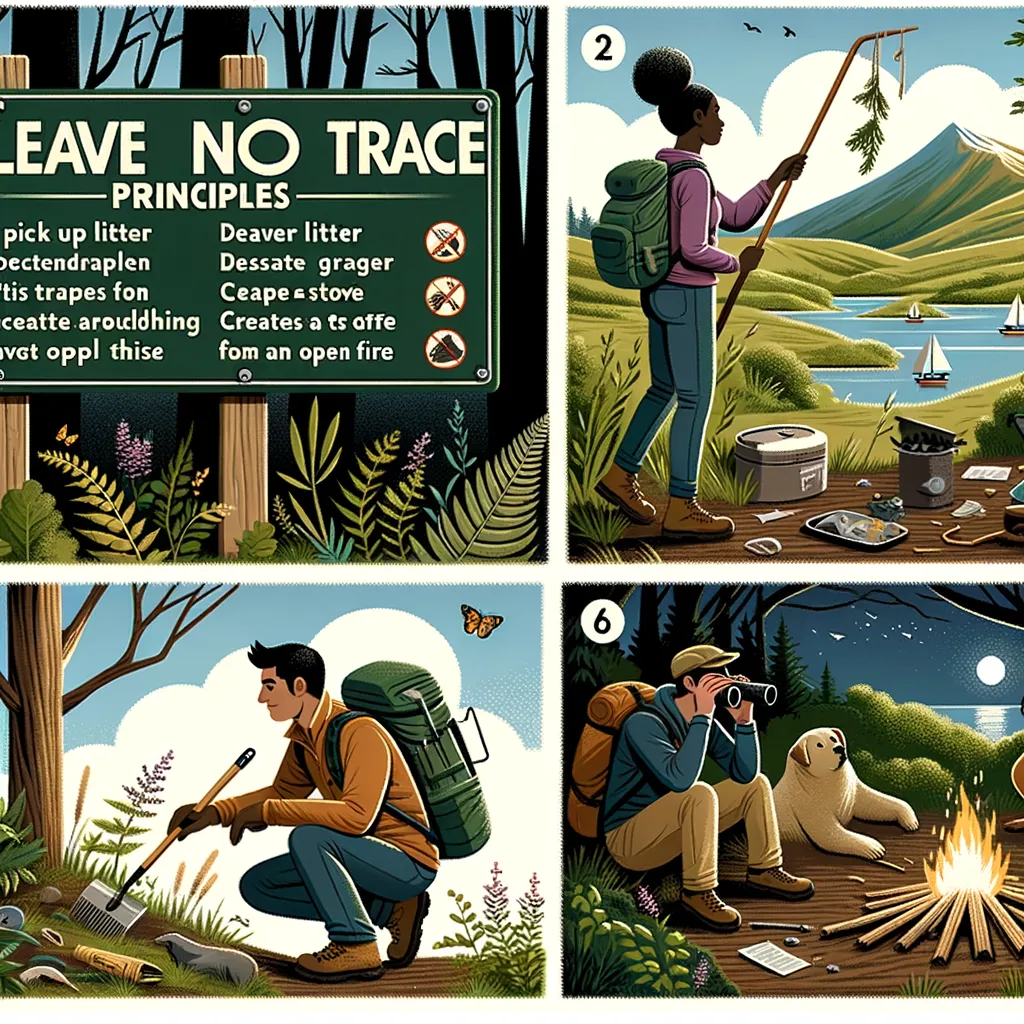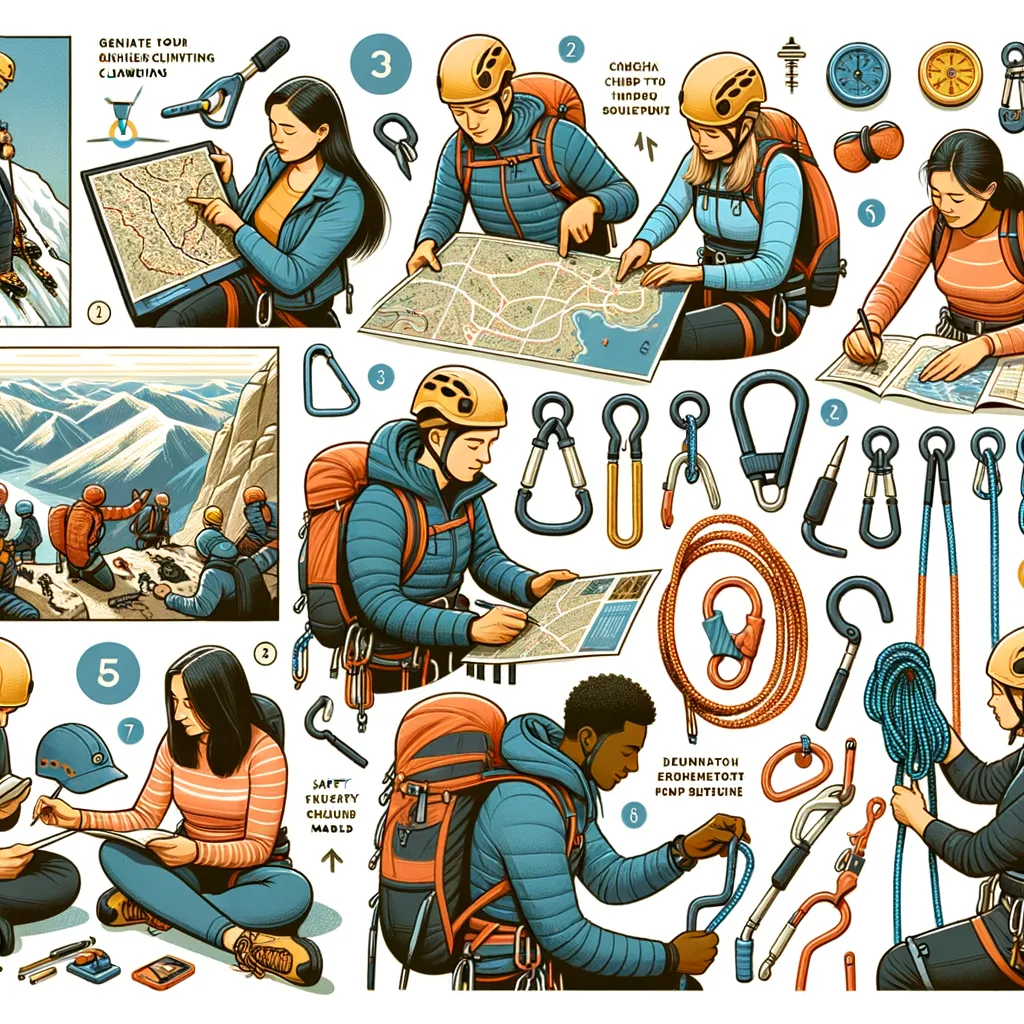The Importance of Leave No Trace Principles for Eco-Conscious Parents
Welcome, eco-conscious parents! Are you looking for ways to instill a deep respect for nature in your children? Do you dream of family adventures that not only bring joy but also teach valuable lessons about environmental responsibility? Well, you’ve come to the right place! In today’s guide, we dive into the heart of Leave No Trace principles and how they can be a cornerstone of mindful parenting and outdoor exploration.
Why Leave No Trace Matters
In our fast-paced, throwaway culture, the principles of Leave No Trace are more crucial than ever. These guidelines help preserve the natural beauty and integrity of our planet for future generations. By adopting Leave No Trace practices, you’re not just going on a hike or camping trip; you’re participating in a movement. A movement towards a more sustainable and eco-friendly way of living and enjoying the great outdoors.
The Seven Leave No Trace Principles Explained
At the heart of leaving no trace is respect — respect for nature, wildlife, and other visitors. These seven principles offer a roadmap for minimizing your impact and ensuring that the great outdoors remain vibrant and healthy. Let’s break them down:
- Plan Ahead and Prepare – Success in preserving nature begins with proper planning. This means understanding the area you’re visiting, weather conditions, and making sure you have all you need to reduce your footprint.
- Travel and Camp on Durable Surfaces – Stick to trails and camping spots that are meant to withstand the impact of foot traffic and temporary habitation.
- Dispose of Waste Properly – Whether it’s leftover food, trash, or human waste, ensuring that you leave no trace means disposing of all waste in a responsible manner.
- Leave What You Find – Preserve the past for future explorers by leaving rocks, plants, archaeological artifacts, and other natural objects as you find them.
- Minimize Campfire Impacts – Campfires can cause lasting impacts to the environment. Use a camp stove for cooking and enjoy natural night lights when possible.
- Respect Wildlife – Observe wildlife from a distance, and do not feed them. Feeding wildlife damages their health, alters natural behaviors, and exposes them to predators and other dangers.
- Be Considerate of Other Visitors – Respect other visitors and the quality of their experience. Be courteous on trails, keep noise to a minimum, and preserve the natural serenity of the outdoors.
Integrating these principles into your family adventures not only enhances the beauty of your experiences but also teaches your children the importance of environmental stewardship. It shows them that each action, no matter how small, can have a significant impact on our planet.
How to Teach Your Children About Leave No Trace
Teaching your children about Leave No Trace starts with practice and example. Children learn best by observing and doing, so make these principles a natural part of your outdoor adventures. Here are some practical ways to involve your children:
- Involve Them in Planning – As you plan your trips, discuss why you’re choosing certain areas, what kind of wildlife you might see, and how you can minimize your impact. This encourages anticipation and respect for the adventure ahead.
- Show and Tell – When you’re on the trail, point out examples of good Leave No Trace practices and call attention to signs of misuse. This visual learning reinforces the lessons and shows the real-world implications of our actions.
- Practice Makes Perfect – Encourage your children to take the lead in setting up camp, choosing a campsite on durable surfaces, or packing out trash. Hands-on learning is key to understanding and remembering these principles.
- Giving Back – Participate in local clean-up days or volunteer for conservation efforts. This shows children the value of community and collective responsibility for our environment.
By introducing your children to the Leave No Trace principles, you’re not just teaching them how to enjoy the outdoors responsibly; you’re instilling values that they will carry with them throughout their lives.
This section offers a comprehensive introduction to Leave No Trace principles

Unlocking the Secrets to a Sustainable Outdoor Adventure: Leave No Trace for Families
Nature’s playground offers endless opportunities for exploration and learning, making every outdoor adventure a precious memory for families. But, as eco-conscious parents, it’s our duty to ensure that these adventures are as kind to the earth as they are fun for our little explorers. That’s where understanding and implementing the Leave No Trace principles becomes indispensable. This guide aims to deepen your knowledge and provide practical tips for applying these principles in a family setting, ensuring that your outdoor activities are sustainable, respectful, and enriching for all.
Five Essential Insights for Parents Embracing Leave No Trace
Before diving into the nuts and bolts of Leave No Trace, let’s explore five critical insights that every parent should know. These insights will prepare you for a journey of responsible exploration and environmental stewardship with your family.
- The Foundation is Respect and Love for Nature – Instilling a deep-rooted respect and love for the natural world in your children is the first step towards lifelong stewardship. Conversations about the beauty of nature, its fragility, and our role in its preservation lay the groundwork for understanding the importance of Leave No Trace practices.
- Every Action Counts – Emphasize to your children that no action is too small when it comes to conserving the environment. Whether it’s picking up a piece of litter on a hike or deciding to leave a pretty rock where it lies, every decision contributes to the larger goal of minimizing our impact.
- Learning Is a Family Journey – Leave No Trace is not just a set of rules; it’s a way of life. Make learning about and practicing these principles a family activity. Encourage questions, and let your children see you actively practicing what you preach. Their observation will teach them more than any lecture could.
- Preparation Is Key – A successful and responsible outdoor adventure is all in the preparation. This not only involves packing the right gear but also educating yourself and your family about the specific environment you’ll be visiting, its wildlife, and how to minimize your impact on it.
- Community Involvement Enhances Learning – Participating in local environmental groups or clean-up activities can significantly enrich your family’s understanding of Leave No Trace principles. Community involvement offers practical learning experiences and shows your children the power of collective action.
Practical Tips for Preparing Your Family for Leave No Trace Adventures
Knowing the importance of Leave No Trace is one thing; applying it is another. Here are some hands-on tips to get you and your family ready for your next eco-friendly adventure.
- Do Your Homework – Before you set out, spend time with your kids researching the area you’ll be visiting. Look up the local flora and fauna, understand the area’s sensitivity to human impact, and discuss what specific actions you can take to protect it.
- Involve Your Children in Packing – Make packing an educational activity. Use it as an opportunity to discuss why certain items, like reusable water bottles or eco-friendly sunscreen, are essential for minimizing your environmental footprint.
- Create a Leave No Trace Kit – Together with your children, assemble a kit that includes items like garbage bags, biodegradable soap, and a trowel for digging cat holes. Explain the purpose of each item, reinforcing the principles behind them.
- Role-Playing Scenarios – Prepare your children for real-life situations by role-playing scenarios they might encounter. What should they do if they find a bird’s nest on the ground? How do they react if they see someone littering? This not only makes learning fun but also helps them think critically about their actions.
- Lead by Example – Finally, the most powerful tool you have is your example. Show your children how to practice Leave No Trace principles in both your planning and your actions. When they see you making responsible choices, they’re more likely to do the same.
Embracing Leave No Trace principles is a journey that you and your family can take together toward a more sustainable and conscientious relationship with the natural world. By preparing your children for this journey, you’re giving them the tools they need to be responsible stewards of our precious planet. And remember, every step you take to minimize your impact helps ensure that the great outdoors will continue to be a source of joy
All the things Outdoors you should know. Learn more here
Disclaimer
The articles available via our website provide general information only and we strongly urge readers to exercise caution and conduct their own thorough research and fact-checking. The information presented should not be taken as absolute truth, and, to the maximum extent permitted by law, we will not be held liable for any inaccuracies or errors in the content. It is essential for individuals to independently verify and validate the information before making any decisions or taking any actions based on the articles.




